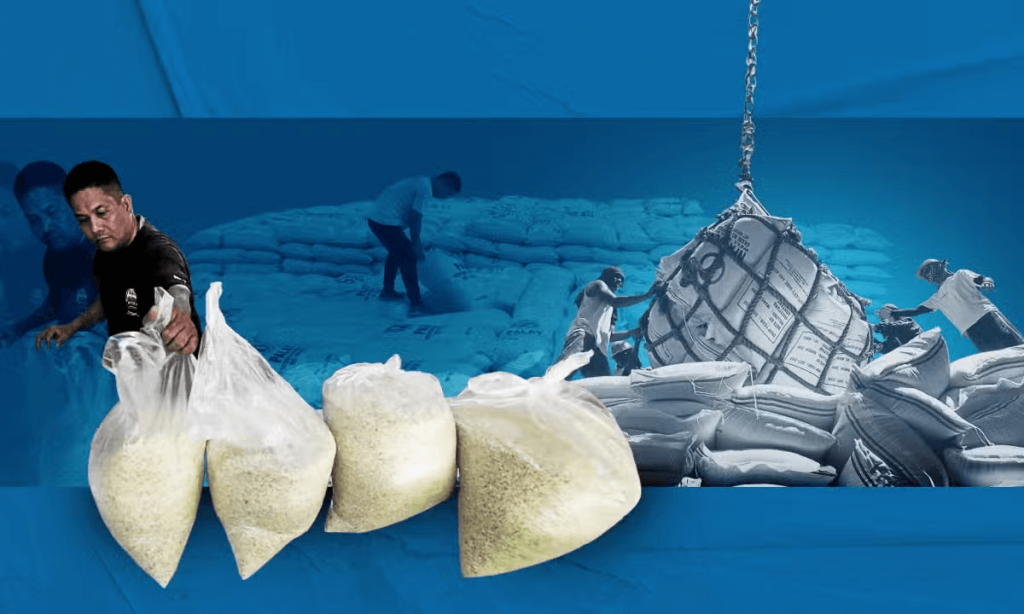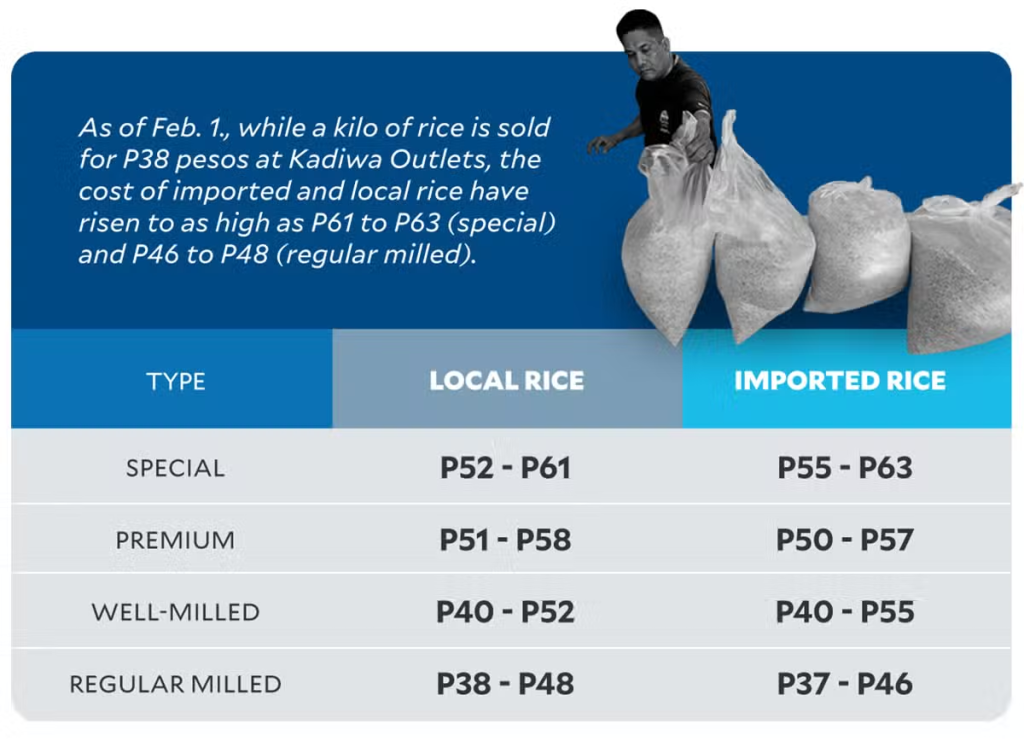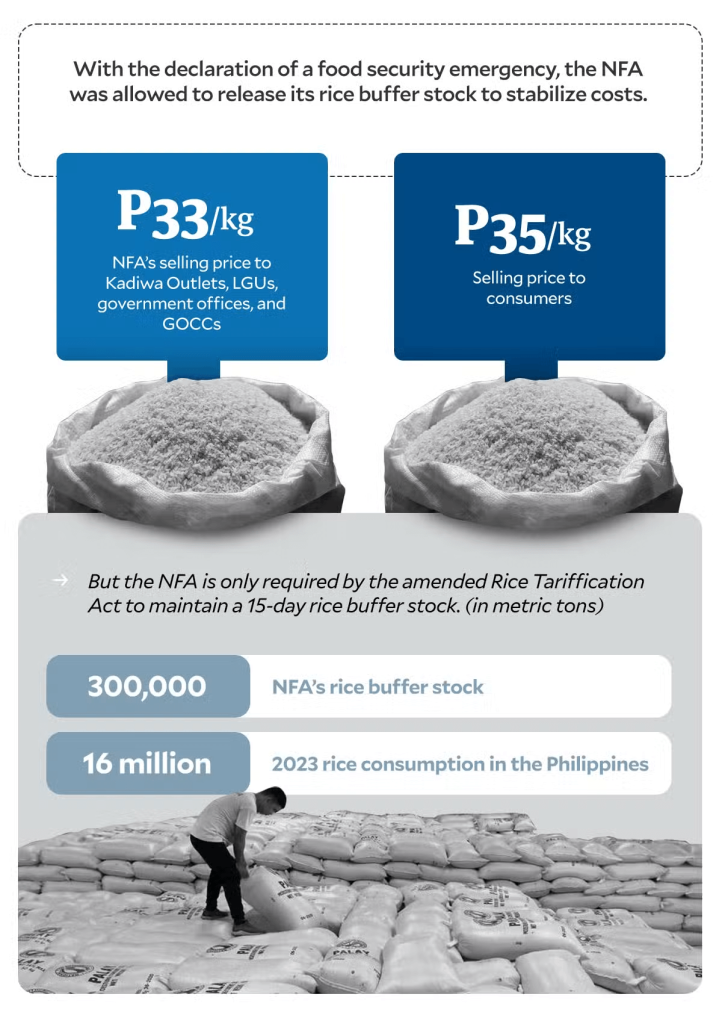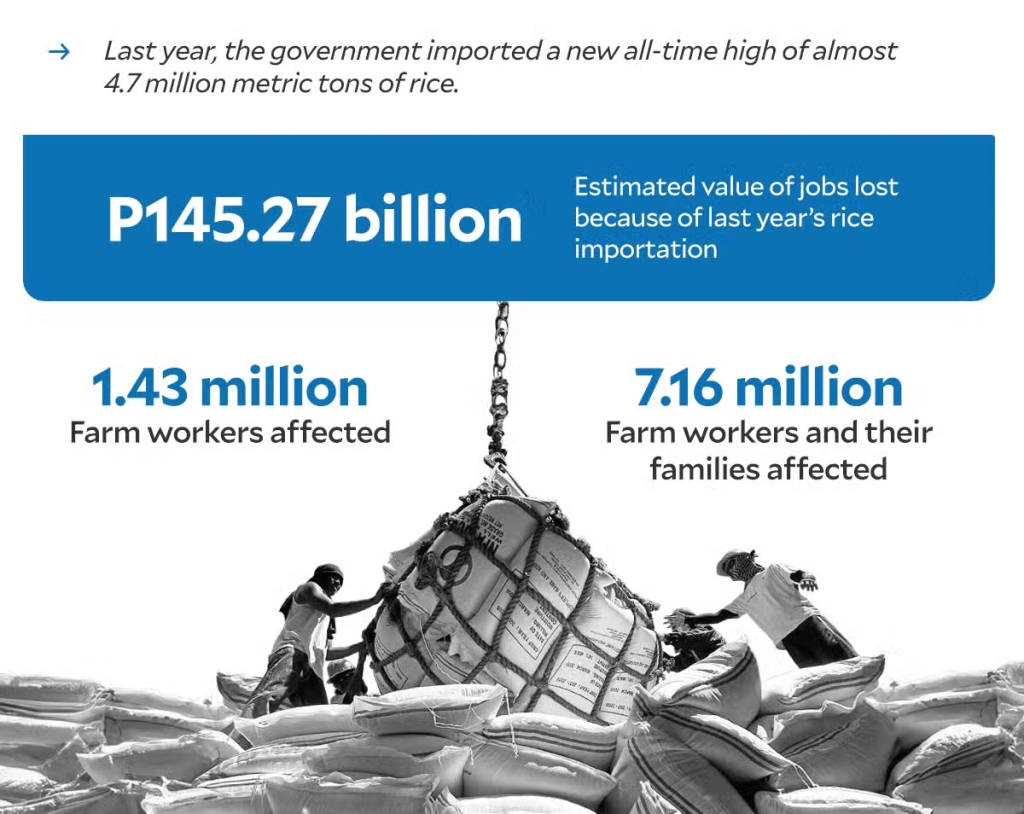Tags
Food security emergency for rice: The real issues
By: Kurt Dela Peña – Content Researcher Writer.

MANILA, Philippines—With over 17 million poor households in the Philippines, an economist pointed out that the price of rice has to be brought down after increasing from P38 per kilo in the first months of 2022.
Based on data from the Department of Agriculture (DA), the price of a kilo of local regular milled rice spiked to as high as P55 a day before the ceiling imposed by Malacañang took effect, but over a year later, the price of rice is still high at P46.
So to stabilize prices and ensure that rice remains accessible, Agriculture Secretary Francisco Tiu Laurel Jr. declared on Monday, Feb. 3, a food security emergency, heeding the recommendation of the National Price Coordinating Council (NPCC).

However, Sonny Africa, executive director of the think tank Ibon Foundation, told INQUIRER.net that the declaration was made just “to give the appearance of action on a problem that is the government’s own doing.”
This, as he stressed that the high price of rice, with local well-milled going as high as P55 last weekend, is because domestic rice production and local farmers have been “neglected for so long.”

Even the DA admitted in Department Circular No. 3 that there has been an “extraordinary” rise in local prices, which has persisted despite lower global market costs and a cut in tariff rates in the past few months from 35 percent to 15 percent.
NFA to sell rice
With the declaration, the DA stated that the National Food Authority (NFA), which is legally restricted from selling rice directly to the public, can now release its buffer stock to government offices, local government units, and Kadiwa ng Pangulo outlets for P33 a kilo.
The supply will then be sold to consumers for P35.
The problem, however, is that the NFA has only 300,000 metric tons of rice, which is “not enough to influence rice prices” because it is way lower than the 16 million metric tons of rice consumed by Filipinos in a year.
“This is not even a week’s worth of rice at the consumption levels of the average Filipino family,” he pointed out. The DA said only half of the 300,000 metric tons could be released over the next six months to ensure enough buffer stock for emergencies and disaster response.
It was stated by NFA Administrator Larry Lacson that the office is expected to release 150,000 metric tons—or 3 million 50-kilo bags—of rice over six months, especially in areas with elevated rice prices.
This means that 30,000 metric tons of rice will be released each month.
But as Africa stressed, “if it even materializes, the supposed P3 to P5 cut in rice prices will likely just be felt in the few hundred Kadiwa ng Pangulo outlets that are able to serve just a few thousand families nationwide.”
Where to get rice?
The DA said the rice harvest season, which is set to begin mid-February, will see the NFA procuring palay at P23 a kilo to increase buffer stock in compliance with Republic Act (RA) No. 12078, or the amended Rice Tariffication Act.
The law, signed by President Ferdinand Marcos Jr. last year, requires the NFA to maintain a 15-day rice buffer stock, which is equivalent to 555,000 metric tons, “to meet national consumption needs.”
But would this be possible?
The NFA has P9 billion for rice buffer stock this year, based on the initial nine-day requirement, but the agency has requested P9 million more to cover the additional six days required by the amended law.
Tiu Laurel explained that with palay prices this year—averaging P21 to P23 a kilo compared to P27 a kilo in 2024, “the NFA can buy more from local farmers, ensuring both supply and farmer welfare.”
Africa, however, pointed out that if government funds would be mobilized so near the elections, “it would be good to have clear and functioning mechanisms for public transparency and accountability to make sure this isn’t misused.”
No importation, please?
But what if the government argues that local production is not enough, triggering the provision in RA No. 12078 that increases rice imports, which already reached an all-time high of 4.7 million metric tons last year?
Teodoro Mendoza, a retired professor of crop science at the University of the Philippines Los Baños pointed out that the estimated value of jobs lost in importing the record high volume of rice is P145.27 billion.

He explained that 4.7 million metric tons is already equivalent to 229.27 million days of work in growing and harvesting rice in the farm, affecting about 1.43 million farm workers, or about 7.16 million people.
The estimated value of work lost at P500 a day is about P114.63 billion, he said.
Rice milling accounted for P18.92 million days affecting 118,250 mill workers or about 591,000 people. The lost income for milling, including the lost income for drivers, and the milling fees of the mill owner totaled P30.64 billion.
As Africa stressed, “there is reason to doubt the government’s sincerity to address insufficient and expensive local price production.”
“For instance, RA No. 12078 included an explicit provision allotting P30 billion annually for the Rice Competitiveness Enhancement Fund (RCEF). However, the 2025 General Appropriations Act (GAA) signed into law on December 31, 2024 still gives just Php10 billion for RCEF,” he said.
Africa said “improving palay productivity is also critically dependent on the availability of irrigation.” “However, the 2025 GAA even cut the National Irrigation Administrations’s budget to P69.3 billion from P70.2 billion in 2024.”
https://newsinfo.inquirer.net/2032518/food-security-emergency-for-rice-the-real-issuesPublished Date: February 7, 2025






